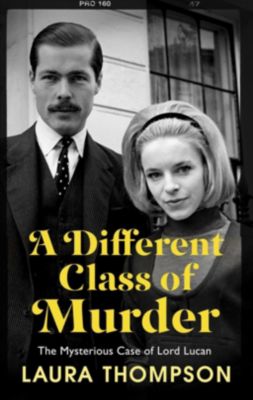

/arc-anglerfish-eu-central-1-prod-prisa.s3.amazonaws.com/public/QOIMFBWGBNG3BFYMUJUL3GBWWI.jpg)

The issue here is that, fundamentally, the circle cannot be squared and rests largely on whether one believes bigotry is, at some level, historically inescapable.) (This approach gets only so far when it comes to discussing her reliance on racist tropes, and particularly antisemitic slurs, on which Worsley maintains that we must accept her as a product of her class and time, but also that we must squarely face the reality of what she writes and not try to excuse it. Her gift for dialogue and for manipulating social stereotypes, as Worsley demonstrates, was formidable, keenly attuned to the proliferating class anxieties of the 20th century numerous characters are, interestingly, transitional or dispossessed in some way, at odds with one view of her as a writer of the country-house elite. Worsley is correct to argue that dismissing the books as formulaic – algebraic, indeed – is a way of diminishing Christie’s power to graft an apparently impenetrable mystery on to an evocatively imagined and interestingly peopled setting, and to repeat the trick over and over again such reductive ways of characterising the work of popular writers are still very much in evidence. In terms of the novels, Worsley’s focus is on debunking the assumption that Christie invented and epitomised what has become known as “cosy” crime fiction, pointing to the darker elements of her work, its modernity, and its increasing interest in psychological themes.Ĭhristie in her Berkshire home, 1950.

In service of the former, she revisits the most notorious episode of Christie’s life: her disappearance for 11 days in December 1926, prompting blanket media coverage, an extensive police search and, after she had resurfaced at a hydropathic hotel in Harrogate, widespread suspicion that her tale of memory loss was an elaborate publicity stunt. Enter historian Lucy Worsley, whose declared intention is to rescue Christie, who died in 1976 at the age of 85, from the misperceptions that cling to her life and her works of fiction. Janet Morgan’s official biography of 1984 and Laura Thompson’s equally detailed but ultimately more impressionistic portrait of 2007 have both been updated and reissued and there are numerous other analyses that try to understand how the woman who routinely described herself as a housewife became Britain’s bestselling novelist of all time. I f Agatha Christie remains elusive, it’s not for the want of those trying to find her.


 0 kommentar(er)
0 kommentar(er)
